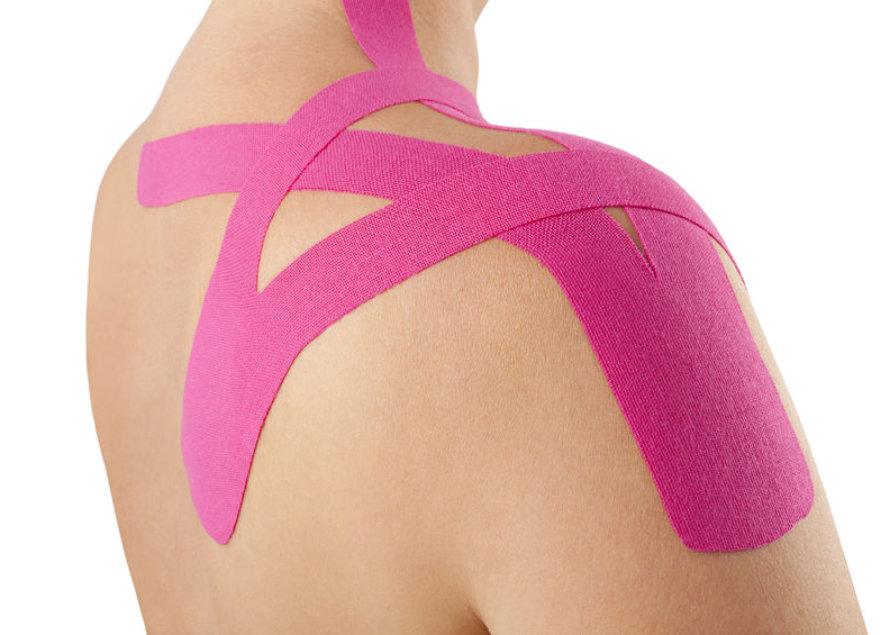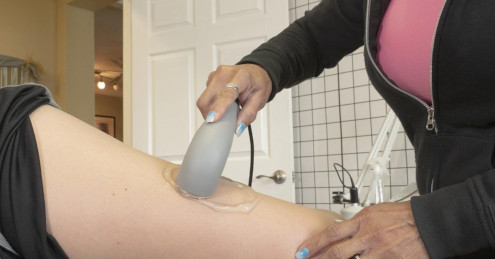Pain Alleviation
Reduce Irritation in Joints
Living with Kinesiotape
Uses for Kinesiotape
Kinesiotape has a wide range of uses, based on the manner and location of its application. Dr. Strack will tell you if kinesiotape is the best course of action to treat any of these conditions, and more:
Shin Splints
This condition, also known as “tibial stress syndrome,” can occur in athletes, dancers, military members, and anyone who has recently changed their training routines or the intensity of those routines. If you are feeling pain, soreness, or tenderness on the inner side of your shin bone, visit Dr. Strack to discuss your diagnosis and treatment options.
Knee Pain
If you are experiencing knee pain, kinesiotape may help you to treat that discomfort. Kinesiotape treats knee injuries by using the stretch of the tape to reduce pressure on the knee joint. The use of kinesiotape on the knee has been used to treat conditions such as bursitis, tendinitis, runner’s knee, jumper’s knee, and more.
Muscle Pain and Swelling
Kinesiotape has been shown to assist in lymphatic drainage by creating a space between the injured area and the skin above it, helping the lymphatic system to drain painful fluid build-up that delays healing. Speak to Dr. Strack about whether kinesiotape is the best solution to treat your muscle swelling.
Sprained Ankles
Sprained ankles are the area we most commonly treat with kinesiotape. While these injuries can be easy to diagnose, the complexity of their treatment can sometimes be underestimated. When a sprained ankle comes into the office, we first work to rule out an avulsion fracture, which would require time in a boot. A typical sprained ankle will sideline an athlete for two to three weeks, but Dr. Strack’s goal is to get the athlete back on the field within the week they get into the office. The sooner we can restore range of motion, the quicker the athlete can get back to competing.

Schedule Your Appointment!
More from Strack Chiropractic Wellness Center
Therapeutic Modalities

Chiropractic Adjustments

